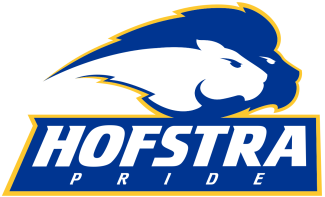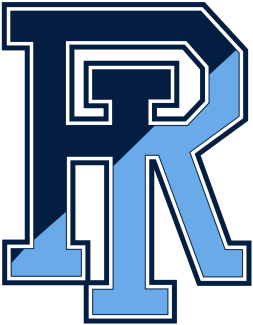MOVING THE PROCESS FORWARD
Over the course of three days in Phoenix, the USA Lacrosse staffers helped the other attendees — engineering experts, helmet and lacrosse industry representatives, and sports medicine professionals — understand the need for a unique performance standard for women’s lacrosse headgear.
“As first time ASTM meeting attendees, we were pleasantly surprised to be joined by about 65 other attendees for the headgear meeting,” Carpenetti said. “We explained in great detail the differences between men’s and women’s lacrosse and expressed our serious concerns about introducing head protection into women’s lacrosse that was developed for other sports.”
Dr. Trey Crisco, a bio-engineering professor at Brown University and a member of USA Lacrosse’s Sports Science and Safety Committee at the time, presented the ASTM attendees with preliminary data from research he was conducting that examined head acceleration rates in women’s lacrosse.
Significant time was also spent in discussions about completed studies that identified the primary mechanisms of injury in women’s lacrosse as stick-to-head and ball-to-head impacts.
“Without a doubt, the research by Dr. Crisco and some preliminary research being done by others were all central to our understanding of the force of impact that we wanted to mitigate through an equipment standard,” Carpenetti said.
On May 10, the USA Lacrosse leaders left Phoenix knowing that ASTM was establishing a task group to evaluate additional research findings and further coordinate the development of a women’s lacrosse-specific standard. Carpenetti accepted the role as co-chair of the task group.
Crisco’s research, funded jointly by USA Lacrosse and NOCSAE, continued through the remainder of 2012 and into 2013. Ultimately, Crisco’s findings about the relationship between head acceleration speeds and resulting head traumas would become a key component in the standards discussion. Head acceleration includes how fast the head moves and then stops after an impact. It’s a measure associated with brain injuries, including concussions.
“Unlike the boys’ game, where head injuries are dominated by body-to-body or head-to-head contact, in the girls, we don’t see that, but we do see the stick impacting the head,” Crisco said. “The goal of the study was to get an understanding of the relationship between the severity of the stick checks and the resulting head accelerations.”
Eventually, armed with Crisco’s findings and additional data, the ASTM task group drafted a performance standard that was presented for review. Dr. Bruce Griffin, who joined USA Lacrosse in 2013 as the organization’s first-ever director of health and safety, served as one of the lead authors for the technical draft of the performance standard.
ASTM protocol requires that each proposed standard goes through multiple balloting reviews prior to adoption. The first ballot, launched in 2014, was open only to members of the headgear and helmets subcommittee. ASTM’s collaborative and open protocol required the task group to address all objections, or negative votes, prior to the launch of the second ballot to a larger portion of the ASTM membership.
After objections were addressed, the women’s lacrosse headgear performance standard, known officially as F3137, was approved during ASTM’s semi-annual meeting in May 2015.
Shortly afterwards, USA Lacrosse enacted a rule change, stating that while headgear use remained optional, if used, headgear must meet the new ASTM standard, F3137. In order to allow time for product development by manufacturers, implementation of the rule was set to begin January 1, 2017.
THERE’S AN APPROVED STANDARD — NOW WHAT?
By the middle of 2016, both Cascade and Hummingbird Sports had introduced women’s headgear products into the marketplace. They continue to be the only two manufacturers who produce headgear that meets certification requirements through the Safety Equipment Institute (SEI).
Meanwhile, USA Lacrosse continues to seek and support research efforts to evaluate the efficacy of women’s headgear use. Having good field data is imperative for an accurate analysis on the effectiveness of the equipment.
One small study which included, as part of the research team, two members of the USA Lacrosse Sports Science and Safety Committee, Dr. Andrew Lincoln and Dr. Shane Caswell, published its findings in December 2020. That research indicated that headgear does appear to reduce the magnitude of head accelerations associated with body impacts but does not change the rate of impacts or how they occur.
Another study with a much larger sample size, with funding support from both NOCSAE and USA Lacrosse and headed by Dr. Daniel Herman at the University of Florida, launched in 2019 and is now complete. With data collection involving over 350,000 high school athlete exposures, it is one of the largest women’s lacrosse injury studies ever conducted and the most definitive analysis to date on the impact of lacrosse specific women’s headgear.
Initial findings from the study indicate that concussion rates among high school girls’ lacrosse players not wearing headgear were 59 percent higher than those wearing headgear. The full results and data will be formally presented at the American Academy of Pediatrics’ national conference on October 8, with the published report to follow.
“We are especially grateful for the work that Dr. Herman and his cohorts have done on this important topic,” said Caitlin Kelley, who succeeded Coyne as USA Lacrosse’s women’s game director in 2016. “USA Lacrosse wants to make the most informed decisions possible by utilizing data specific to the women’s game to shape existing rules and equipment.”
The data from Herman’s research study now supplements all the other information about headgear that has been collected and will help guide USA Lacrosse’s future recommendations on the use of women’s headgear. For now, women’s headgear use remains optional in the rules set forth by all the governing bodies for lacrosse — the NCAA, NFHS and USA Lacrosse.
“While this has been a long journey and one that has had USA Lacrosse’s leadership and support for over a decade, the process is never really completed,” Carpenetti said. “Along with so many other stakeholders, we must constantly strive for more information to best understand how we can evolve both rules and equipment to create the safest sport possible. Working together, we’ve made great progress, but the commitment to player safety never ends. We must never be satisfied that our work is done.”


























































